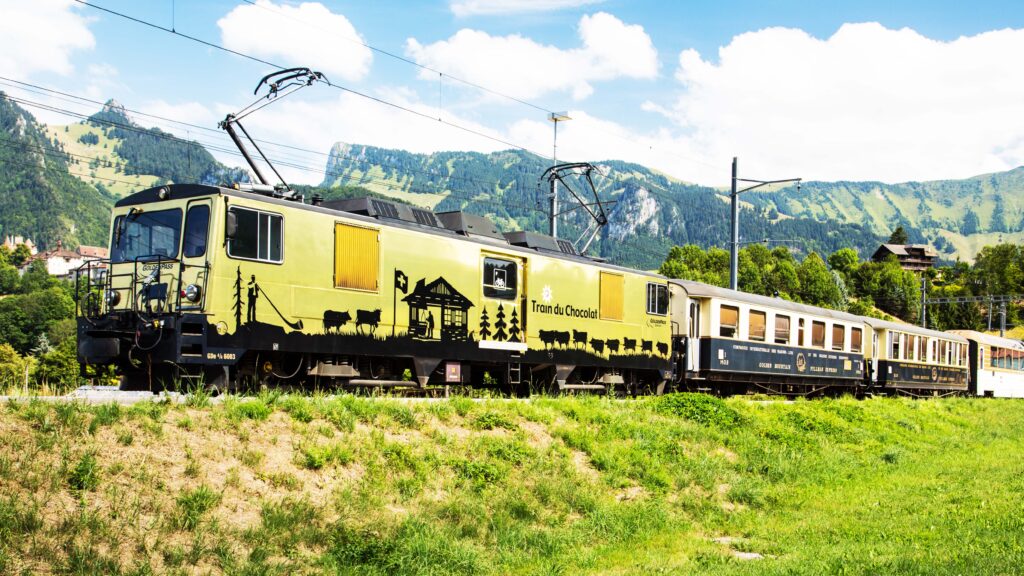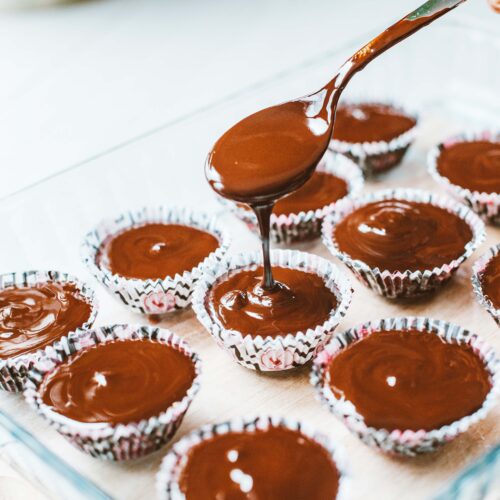Warning: May Cause Extreme Cravings and Chocolate Comas!
Switzerland is renowned for its exquisite chocolate, and what better way to explore this culinary masterpiece than embarking on a chocolate road trip through the country.
The journey takes you on a delicious adventure, where you’ll have the opportunity to sample some of the world’s finest chocolates, discover the origins of Swiss chocolate making, and visit some of the most picturesque locations in the country.
Whether you’re a Swiss chocolate enthusiast or just looking for a unique and indulgent experience, this road trip is guaranteed to satisfy your taste buds and leave you with memories to last a lifetime.
Here is a suggested Swiss iTinerary for a chocolate road trip in Switzerland:
Day 1: Zurich
- Visit the Lindt & Sprüngli Chocolate Factory in Kilchberg, just outside of Zurich, for a guided tour of the production process and to taste some chocolate.
- Explore Zurich’s old town and visit the iconic Swiss chocolate brand Sprüngli’s flagship store, where you can indulge in their signature Luxemburgerli macarons and other chocolate creations.
- Stroll along Lake Zurich, and visit nearby Confiserie Honold for chocolate treats.
- Stay overnight in Zurich.
Day 2: Interlaken
- Drive to Interlaken, a scenic town between Lake Thun and Lake Brienz.
- Visit the Funky Chocolate Club, where you can create your own personalized chocolate bar.
- Take a scenic train ride to the picturesque town of Lauterbrunnen and visit the chocolate shop, Schuh.
- Stay overnight in Interlaken.
Day 3: Gruyères
- Drive to the medieval town of Gruyères, famous for its cheese and chocolate.
- Visit the Maison Cailler chocolate factory, where you can take a guided tour of the production process, taste different varieties, and create your own chocolate.
- Explore the charming town of Gruyères and visit La Chocolatière for some artisanal chocolates.
- Stay overnight in Gruyères.
Day 4: Montreux
- Drive to Montreux, located on the shores of Lake Geneva.
- Visit the Nestlé headquarters in Vevey, just a short drive from Montreux, and take a tour of their Alimentarium museum, which includes exhibits on the chocolate history and production.
- Explore the old town of Montreux and visit Favarger for some of their signature chocolate flakes.
- Stay overnight in Montreux.
Day 5: Geneva
- Drive to Geneva, Switzerland’s second-largest city.
- Visit Chocolaterie Stettler, one of the oldest chocolate shops in the city.
- Take a guided chocolate tour of the city with Sweet Geneva or Geneva Tourist Office, and explore the history and culture of chocolate in Geneva.
- Visit Auer Chocolatier, known for its chocolate-coated candied fruit.
- Stay overnight in Geneva.
Day 6: Lausanne
- Drive to Lausanne, a picturesque town on the shores of Lake Geneva.
- Visit Läderach Chocolate Factory, where you can take a guided tour and taste different chocolates.
- Explore the old city of Lausanne and visit Blondel, known for its signature Lutti chocolate.
- Stay overnight in Lausanne.
Day 7: Return to Zurich
- Drive back to Zurich, stopping at any chocolate shops you may have missed.
- Visit the Chocolate Frey Factory Outlet to buy discounted chocolate treats.
- Return your rental car and depart from Zurich.
Did you know?
In 1875, a Swiss chocolate manufacturer named Daniel Peter added condensed milk to his chocolate recipe, which resulted in a creamier and smoother texture. This invention revolutionized the chocolate industry and paved the way for the production of milk chocolate, which has become one of the most popular types of chocolate in the world today.
And, did you know there is a chocolate train?

A little history:
Swiss chocolate making dates back to the 18th century when Switzerland was known for its dairy production. The first chocolate factory in Switzerland was established in the early 1800s, and by the mid-1800s, Switzerland had become one of the leading producers of chocolate in Europe.
Swiss chocolate makers were known for their attention to detail and use of high-quality ingredients, such as fresh milk and cocoa beans sourced from around the world.
In the late 1800s, Swiss chocolatiers began experimenting with new techniques and ingredients, such as adding hazelnuts and almonds to their chocolate recipes. They also developed new methods for grinding and conching chocolate, which resulted in a smoother and creamier texture.
 Swiss chocolate gained international recognition in the early 1900s when companies like Lindt, Tobler, and Nestle began exporting their products to other countries.
Swiss chocolate gained international recognition in the early 1900s when companies like Lindt, Tobler, and Nestle began exporting their products to other countries.
Swiss chocolate, as we know it, is considered some of the finest in the world, and Swiss chocolate makers continue to innovate and experiment with new flavors and techniques to maintain their reputation as leaders in the chocolate industry.



